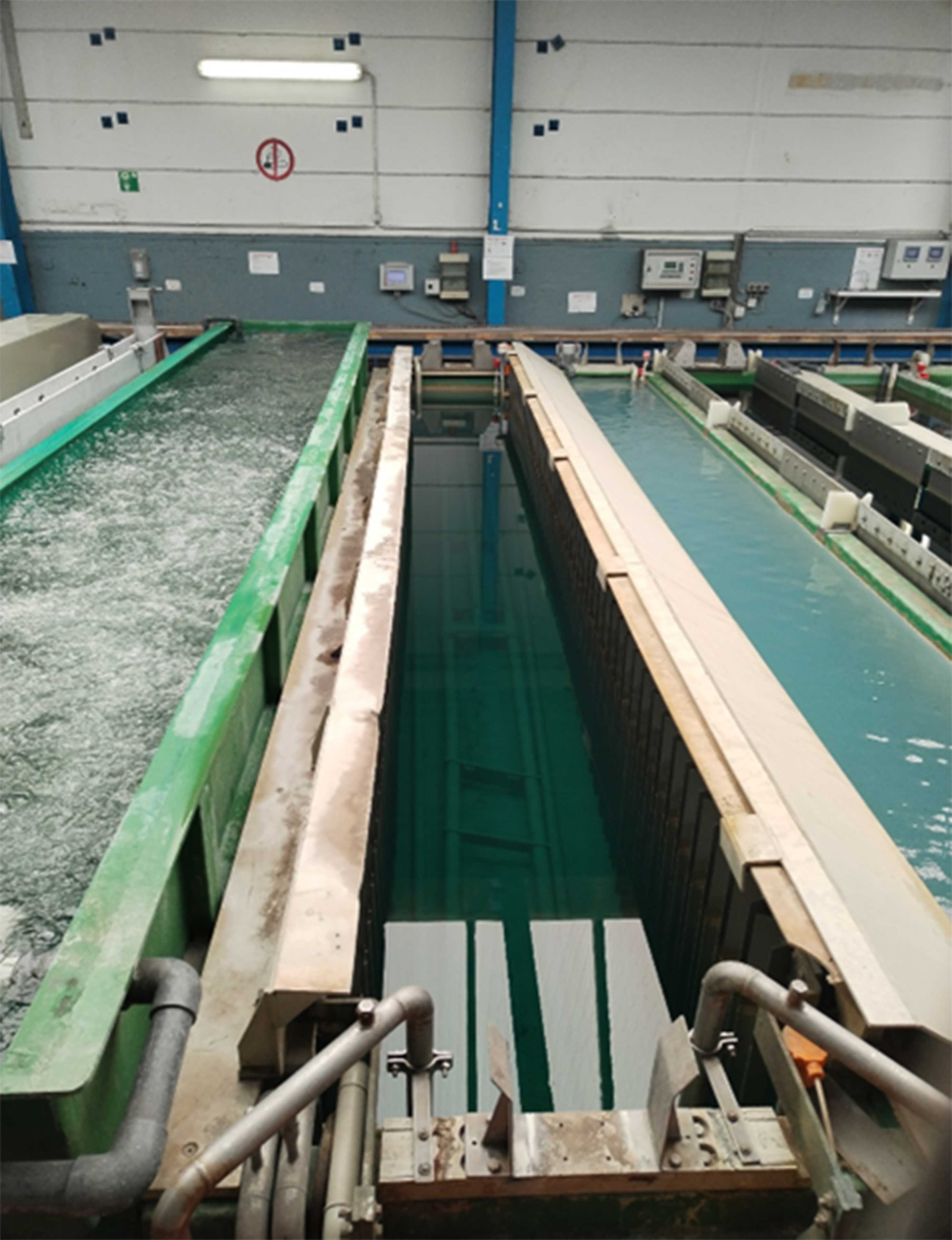Clear baths - optimal colors
January 14, 2025
Optimized bath care for contaminated electrolytic dye baths based on tin(II) sulphate
Lightfast colors ranging from champagne to bronze to black are all the rage. However, as the proportion of production in anodizing operations increases, this can lead to quality problems due to the increasing number of colloidal particles that are deposited on system components and parts.
Lightfast colors from champagne to bronze to black are increasing in anodizing operations. This, in turn, poses challenges in terms of avoiding coating defects due to the increased number of collodial particles produced. Optimized filtration and coagulation are necessary to ensure consistently high quality and low resource consumption. Colour baths for colouring anodized aluminium based on tin(II) sulphate have been used in anodizing plants for decades. Lightfast colors from champagne to bronze to black are produced with these baths. For a long time, dyed, anodized surfaces were not well represented in terms of orders, but this has changed in recent years.
Coloured surfaces are very often used in specialized applications. These often combine high visual demands with the necessary technical properties of the black surface. These include, in particular, corrosion protection, the insulating properties of the anodized layer and the physically known, better heat radiation of dark surfaces. This often involves large batch sizes, which in turn lead to a high utilization of production capacity and thus to a very high load on the dye baths.
With well-equipped dyeing bath installations, well-adjusted dyeing electrolytes and appropriate racks, colored surfaces can be achieved that essentially correspond in dimension to those of the anodizing bath. Furthermore, dyeing times have been significantly reduced thanks to the further development and improvement of the scattering behavior, which is largely responsible for the color depth and uniformity. As a result, various companies have been able to produce four product carrier batches with a maximum anodized surface within one hour on a permanent basis throughout the day.
The challenge of maintaining the baths
Depending on the coloring process, the unwanted tin(IV) is formed on the surface of the bath by means of coloring with alternating current and, independently of this, by the ongoing oxidation caused by atmospheric oxygen, which ultimately accumulates in the color bath as insoluble tin(IV) dioxide (SnO2), as sediment. This sediment, recognizable as a yellowish-white precipitate, is so small in terms of its particle surface that it does not settle quickly to the bottom of the bath. Instead, the colloidal particles are distributed homogeneously in the bath and adhere to all wetted components in the color bath. The walls of the tank, electrodes and supply lines are gradually covered with a "coat" and must be cleaned manually at regular intervals.
In heavily frequented baths, the constant strong bath movement caused by the color batches moving in and out does not result in the natural settling of the resulting colloidal precipitate. Instead, the particles float distributed in the bath and lead to production problems on the finished surfaces once a concentration threshold has been reached. Tin(IV) deposits often appear in grooves or other "resting areas" of the components, which cannot be removed in subsequent rinsing processes. Subsequent cleaning of the surfaces is time-consuming and therefore costly and often does not produce the desired results. In order to avoid these deposits reliably, even without cost-intensive part replacements, bath maintenance is extremely important here.
Clear color baths prevent coating defects
Only optically clear color baths are actually sediment-free and therefore the only permanently reliable antidote to such defects. This also applies in a similar way to the color rinse that always follows the active bath. This is because, due to the lower acid content, not only the tin(IV) oxide already mentioned but also the tin(II) sulphate carried over precipitates in this bath - which, as tin(II) hydroxide SN(OH)2, also contributes to precipitate formation and contamination of the water.
Incidentally, it is easily possible to maintain both process steps without having to invest twice in treatment technology. Appropriate installation measures make it possible to maintain the baths and sinks one after the other. One advantage of this holistic maintenance measure is a significant reduction in the chemical load of the subsequent process steps such as deionization rinsing and the compaction of the anodized layer.
Hot compressors are particularly sensitive
Hot compactors in particular, which are deliberately operated with residue-free demineralized water, are especially sensitive to metal compounds that are carried in, which not only cause undesirable turbidity but also higher chemical consumption. In order to obtain residue-free surfaces, hot compactors are filtered in a complex and very expensive process or operated using the neverdump method, i.e. with constant partial renewal, in which the compacting medium (98°C) is replaced by cold demineralized water in the overflow process and heated at high cost. In hot compaction processes, the formation of tin-based colloidal precipitates and their "treatment" is much more difficult due to the temperature and is therefore much more complex and often unsuccessful.
The correct filtration method for color baths and rinsing baths must be carefully selected, dimensioned and professionally installed in all respects. In particular, this includes the filter surface, filter medium, flow volume, coagulant to prevent and treat colloidal precipitates and the professional return of the medium to the treatment tank in order to reliably capture all particles. If this is successful, crystal-clear color baths can be produced that deliver optimum results in terms of color and surface quality.
The new dyeing process was developed in a German-Dutch cooperation between GMS-German-Surface-Technologies, based in Mendig, and Corode, which is part of KIN-Pompentechniek. Both companies worked on the project within the cooperation, with GMS focusing on the electrolyte, the coagulant and the bath installation, while Corode focused on the design and construction of the filter unit.
It is particularly important to mention here that the sulphuric acid bath means that all wetted parts cannot be corroded by sulphuric acid. The flow rate and filter surface are also dimensioned in such a way that the filters used have a long service life and a water-permeable filter cake can build up. Here, empirical values regarding the filter service life were applied, which follow the law that a doubling of the filter area results in a quadratic extension of the filter media used. This results in an economical bath maintenance measure which, in addition to the noticeable improvement in quality, also increases the general maintenance of the color bath. Maintenance intervals are significantly reduced as a result.

GMS German Metal Surface Technologies
www.gms-surface-technologies.com
Corode
www.corode.eu
source reference: MO - Magazin für Öberflächentechnik

Read more news

Specific modifications
If you would like to have specific adaptations of our Corode products or if you have any questions, feel free to contact us.









